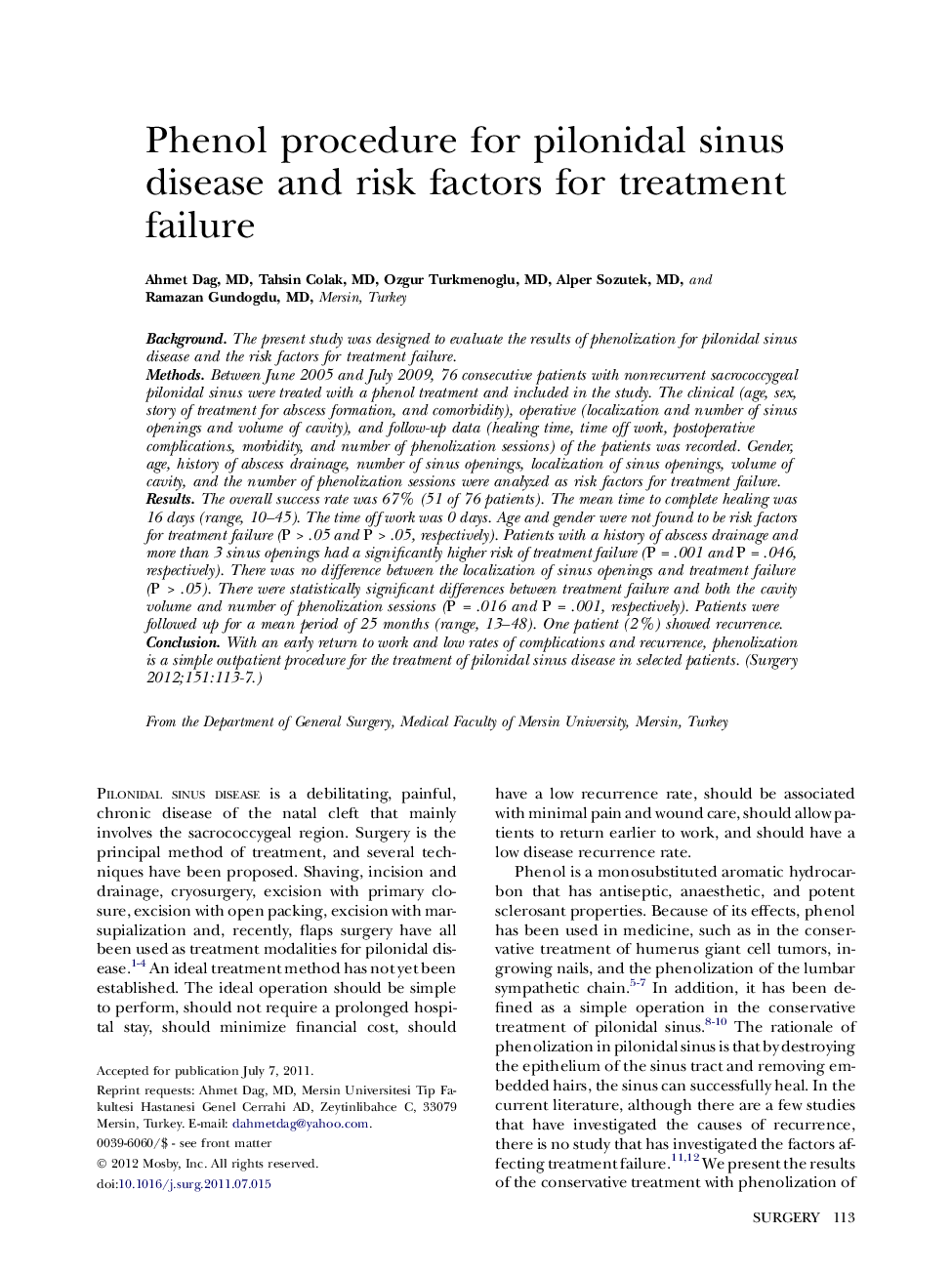| Article ID | Journal | Published Year | Pages | File Type |
|---|---|---|---|---|
| 4308650 | Surgery | 2012 | 5 Pages |
BackgroundThe present study was designed to evaluate the results of phenolization for pilonidal sinus disease and the risk factors for treatment failure.MethodsBetween June 2005 and July 2009, 76 consecutive patients with nonrecurrent sacrococcygeal pilonidal sinus were treated with a phenol treatment and included in the study. The clinical (age, sex, story of treatment for abscess formation, and comorbidity), operative (localization and number of sinus openings and volume of cavity), and follow-up data (healing time, time off work, postoperative complications, morbidity, and number of phenolization sessions) of the patients was recorded. Gender, age, history of abscess drainage, number of sinus openings, localization of sinus openings, volume of cavity, and the number of phenolization sessions were analyzed as risk factors for treatment failure.ResultsThe overall success rate was 67% (51 of 76 patients). The mean time to complete healing was 16 days (range, 10–45). The time off work was 0 days. Age and gender were not found to be risk factors for treatment failure (P > .05 and P > .05, respectively). Patients with a history of abscess drainage and more than 3 sinus openings had a significantly higher risk of treatment failure (P = .001 and P = .046, respectively). There was no difference between the localization of sinus openings and treatment failure (P > .05). There were statistically significant differences between treatment failure and both the cavity volume and number of phenolization sessions (P = .016 and P = .001, respectively). Patients were followed up for a mean period of 25 months (range, 13–48). One patient (2%) showed recurrence.ConclusionWith an early return to work and low rates of complications and recurrence, phenolization is a simple outpatient procedure for the treatment of pilonidal sinus disease in selected patients.
